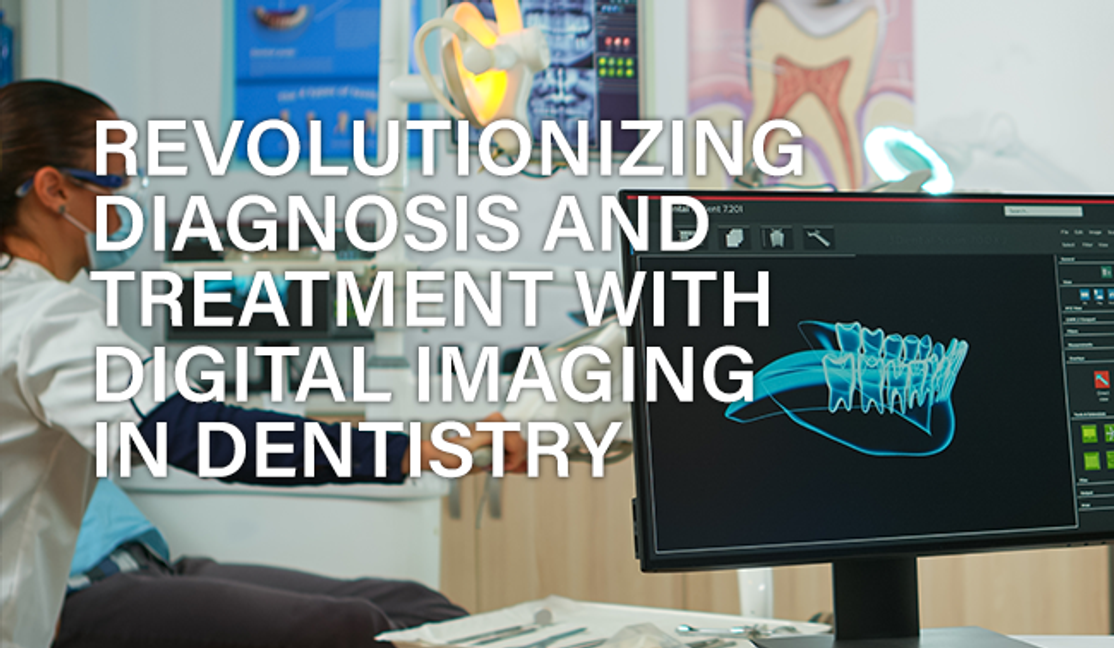Revolutionizing Diagnosis and Treatment With Digital Imaging in Dentistry
Posted by Oscar on 13th Mar 2023
Advances in dental technology have transformed the field of dentistry over the past several decades. From digital imaging to CAD/CAM systems to laser dentistry, new technologies have revolutionized the way dental professionals diagnose and treat patients. In this blog post, we will explore some of the most popular dental technologies in use today and their impact on patient care.
Digital Imaging
According to the American Dental Association, digital radiography reduces radiation exposure by up to 80% compared to traditional film X-rays.
Digital imaging has become an essential tool in modern dentistry. Digital radiography, for example, allows dental professionals to take X-rays of teeth and jawbones with less radiation exposure than traditional film X-rays. This technology also produces images that can be instantly viewed and manipulated, allowing for faster and more accurate diagnoses.
Another digital imaging technology that has transformed dentistry is cone beam computed tomography (CBCT). This technology provides three-dimensional images of teeth and bones, allowing dental professionals to diagnose and plan treatments with greater precision. CBCT is especially useful in orthodontics, implant dentistry, and oral surgery.
Intraoral scanners are another type of digital imaging technology that has gained popularity in recent years. These small devices capture highly detailed images of teeth and gums and can be used to create digital models of the mouth for restorative and cosmetic procedures. Intraoral scanners are also useful for tracking changes in the mouth over time and identifying potential issues before they become serious problems.
CAD/CAM Systems
CAD/CAM (computer-aided design/computer-aided manufacturing) systems have become an integral part of restorative dentistry. These systems use digital technology to design and fabricate dental restorations, such as crowns, bridges, and dentures. With CAD/CAM, dental professionals can create highly accurate restorations in less time than traditional methods.
CAD/CAM systems typically involve three steps: digital scanning, design, and fabrication. First, the tooth or teeth are scanned using an intraoral scanner or impression material. The digital scan is then imported into CAD software, where the restoration is designed. Finally, the restoration is fabricated using a milling machine or 3D printer.
One of the key benefits of CAD/CAM systems is their accuracy. Because the restoration is designed digitally, the fit is often better than traditional methods. CAD/CAM restorations are also more aesthetically pleasing, as the materials used can closely match the color and translucency of natural teeth.
A study published in the Journal of the American Dental Association found that the use of intraoral scanners significantly improved the accuracy of digital impressions compared to traditional impressions. Another study published in the Journal of Prosthetic Dentistry found that CAD/CAM restorations had a 93.3% success rate over a five-year period.
Laser Dentistry
Laser dentistry is a minimally invasive technique that uses lasers to treat a variety of dental conditions. Lasers can be used for both hard tissue (teeth) and soft tissue (gums) procedures.
One of the most common uses of lasers in dentistry is for cavity detection and removal. Lasers can detect cavities in their early stages, before they are visible on X-rays. This allows for earlier treatment and less invasive procedures. Lasers can also be used to remove decayed tissue without the need for drilling, preserving more of the healthy tooth structure.
Lasers are also useful in gum surgery, as they can precisely target and remove diseased tissue without damaging healthy tissue. Laser gum surgery is less invasive than traditional gum surgery and often involves less discomfort and faster healing times.
Other uses of lasers in dentistry include teeth whitening, treating cold sores and canker sores, and removing benign tumors and lesions.
Journal of Periodontology published a study, which found that laser gum surgery resulted in less pain, bleeding, and swelling compared to traditional gum surgery.
Dental technology has come a long way in recent years, and new advancements continue to emerge. Digital imaging, CAD/CAM systems, and laser dentistry are just a few examples of how technology has revolutionized the way dental professionals diagnose and treat patients. These technologies have improved accuracy, speed, and patient comfort, making dental procedures more effective and less invasive. As technology continues to advance, the future of dentistry looks brighter than ever.

